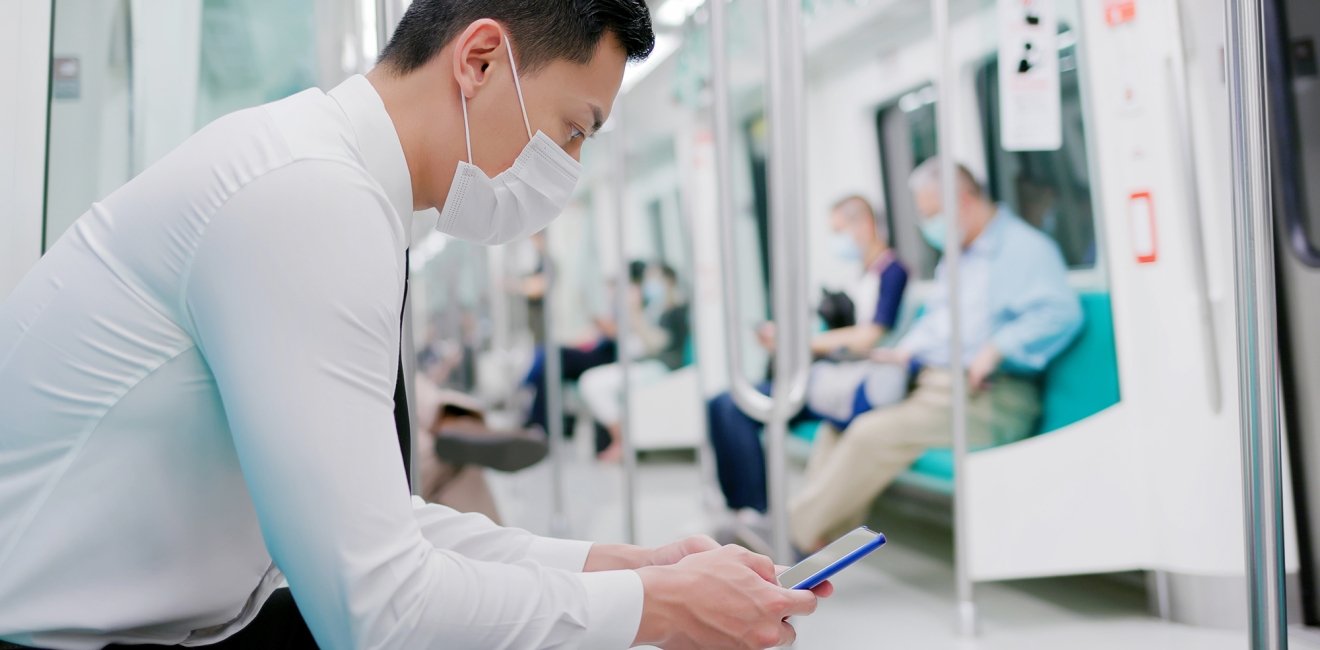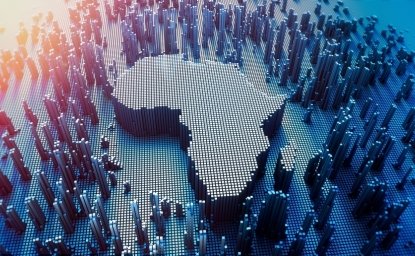The coronavirus pandemic has created huge, and obvious, gaps between the knowledge we have and the knowledge we need. Scientists and citizens alike are grappling with big questions: how is the virus spreading in communities? Who is infected, and who isn’t? How do we protect ourselves and our communities, in particular the most vulnerable among us?
Each day, scientists and public health workers make progress towards answering these questions, and medical workers treat hundreds of thousands of serious cases. Many people, both sick and well, wonder how their time, personal experience, and individual expertise can contribute to generalizable knowledge about the disease and transmission dynamics to help others in their communities and around the world.
Citizen science and crowdsourcing offer huge potential to complement official responses to the coronavirus pandemic. In citizen science, the public participates voluntarily in the scientific process, addressing real-world problems in ways that may include formulating research questions, conducting scientific experiments, collecting and analyzing data, interpreting results, making new discoveries, developing technologies and applications, and solving complex problems. In crowdsourcing, organizations submit an open call for voluntary assistance from a large group of individuals for online, distributed problem solving. Both approaches can not only help bring in more data, but also increase the utility and impact of information by engaging and activating the public.
Crowdsourced data can help understand disease dynamics when testing is limited and for those not seeking medical attention, who do not show up in official reporting. Crowdsourced data is also perhaps uniquely able to help draw general conclusions about behavior - such as how, and the extent to which, people are social distancing. There is an opportunity to complement official data (e.g. state numbers, local health agencies) with platforms collecting data directly from the public. Beyond traditional actors, a range of open innovation projects, including citizen science and crowdsourcing, are engaging members of the public in monitoring and mitigating the impacts of COVID-19.
In addition, there is evidence that people are ready to engage; since stay-at-home orders were put in place, some crowdsourcing and citizen science efforts have seen their highest participation levels ever (examples include CoCoRaHS, Zooniverse, and City Nature Challenge).
Demonstrating flexibility and innovation, some existing citizen science and crowdsourcing projects have pivoted to respond to the crisis. Flu Near You, a citizen science project created by epidemiologists at Harvard, Boston Children’s Hospital, and The Skoll Global Threats Fund, has expanded with a new effort COVID Near You, launched in late March. Safecast, a project initially focused on air quality data after the Fukushima natural disaster, launched a testing map and newsletter.
Others have started new efforts for disease surveillance. The Covid Symptom Tracker was created by scientists and doctors at Massachusetts General Hospital, the Harvard T.H. Chan School of Public Health, King’s College London, Stanford School of Medicine, and Zoe, a healthcare company, with findings published in Nature. Corotrac was made by volunteers and tracks symptoms as well as practices and behaviors like self-isolation. All of these examples demonstrate the prevalence, and value, of crowdsourcing and citizen science for COVID-19.
General Trends
Within the Wilson Center’s Science and Technology Innovation Program (STIP), which considers emerging areas of scientific research and innovative governance models, we have also spent the past few months informally observing these efforts. In addition, recognizing the Wilson Center’s role as a boundary organization that bridges academic and government, we have been thinking about how a range of activities could be better supported and accelerated, including, but not limited to, within federal agencies.
So far, we have seen a number of interesting trends emerge. First, public/private partnerships have proven helpful for standing up projects, particularly on short timelines. For example, COVID Near You worked with Google, Amazon, and others to develop a new platform in less than a week.
We are also noticing that different models for citizen science are emerging. Often, citizen science projects solicit contributions from volunteers of all ages and skills. Many COVID-19 projects focused on systems tracking follow this model. In addition, some organizations, like FEMA, are relying on communities of expert volunteers, such as the GIS Corps, working to develop additional skills as needed. Lastly, compared to the US, where little coordination exists, other countries are coordinating citizen science and crowdsourcing at the national level. Australia and New Zealand’s FluTracking and the UK’s Flusurvey are both conducted by federal health agencies working with universities and/or other NGOs.
While many developments are encouraging, there is an opportunity to do more, particularly within the federal space. Federally supported citizen science and crowdsourcing has been happening for decades, with a recent surge in activities encouraged by Dr. John Holdren in the previous administration’s White House Office of Science and Technology Policy (OSTP). Beyond the executive branch, the Crowdsourcing and Citizen Science Act of 2017, part of the American Innovation and Competitiveness Act (AICA), gives federal agencies explicit and broad authority to use citizen science and crowdsourcing. The Act also offers guidance on data policies; suggests that citizen science data should (whenever possible) be “open and available, in machine readable formats, to the public;” and, authorizes multi-sector partnerships with for-profit or nonprofit entities as well as educational institutes and state, tribal, local, or foreign authorities. Finally, the Act designates the General Services Administration (GSA) as a coordinator. By offering explicit permission, authority, and in some cases guidance, these provisions offer important scaffolding for accelerating citizen science contributions to COVID-19 monitoring and response.
Potential Applications
There are three future applications that could be part of an emergency response:
- Elevating existing initiatives or support the creation of new ones.
- Provide better coordination for organizations and citizen science volunteers.
- Support for enhanced data sharing and data interoperability.
1. Support Existing or New Initiatives
Projects for symptom reporting, like COVID Near You, are currently the most common, and perhaps the most straightforward to implement. These projects often also compile information about access to testing. Precedent exists for sharing patient-generated health data in, for example, breast cancer research. In some cases, patients self-report on their data; in others, they give consent for official health records to be released. There is an opportunity to extend voluntary health record sharing to COVID-19. As we navigate a phased approach to lifting restrictions, new ways of tracking the spread and symptoms of COVID-19 may become essential or, at least, useful by increasing the scope of publicly reported data.
2. Better Coordination for Organizations and Volunteers
Coordination among and between existing initiatives is a challenge, especially when coordination between local or community-led, state, and federal public health infrastructure is required. Where citizen science and crowdsourcing are concerned it can be unclear how and to what degree efforts should be coordinated at the national, state, and/or local (including county and community) level. However, to maximize value for decision-makers working in county health authorities and federal agencies alike, information and best practices should be widely shared.
Scale and interoperability are important to consider when creating effective citizen science or crowdsourcing projects – and those associated with addressing COVID-19 are no different. Contact tracing apps rolled out by state governments and tech companies are running up against these issues. By creating a national monitoring network, the data is more diverse in geographic scope but may fail in reaching an impactful fraction of the population. More localized applications have the advantage of a targeted user base but may fail once people begin to travel frequently to counties without apps or with apps that have no interoperable data sharing.
As designed by the Crowdsourcing and Citizen Science Act, GSA plays a role in coordinating US Federal activities, working with communities including a network of Agency Citizen Science and Crowdsourcing Coordinators and the Federal Community of Practice for Crowdsourcing and Citizen Science. Outside of the Federal government, the U.S.-based Citizen Science Association (CSA) supports and convenes citizen science researchers and practitioners, and other Associations (ECSA, ACSA) are doing the same for other regions. Earth Challenge 2020 is a public-private partnership dedicated to coordinating citizen science data, including through a new data and metadata standard and growing open data platform.
There is also a need for coordination between willing volunteers, particularly volunteers with particular skills or expertise, and institutions in need of assistance. Ending Pandemics, spun out from the Skoll Global Threats Fund, has prototyped what one matchmaking platform might look like. Open opportunities can also support volunteer efforts within federal agencies. Scistarter.org is a platform for helping millions of potential volunteers find projects to contribute to; platforms like Scistarter could be customized to highlight opportunities to support COVID-19 efforts. There is also a need for guidance on what types of citizen science might require volunteers with high levels of training or expertise compared to what types of citizen science can engage broader audiences.
3. Enhance Data Sharing and Interoperability
Particularly given the wide range of existing citizen science initiatives already working on COVID-19, there is a need to promote data sharing and interoperability. Most citizen science projects have data policies, including terms of use, privacy policies, and user agreements, that dictate the conditions under which researchers collect and share data from volunteers. One challenge is understanding how to respect such agreements while sharing aggregated information. At a basic level, guidance is required to help citizen science projects understand how to work within existing frameworks, like HIPPA, to anonymize and aggregate their data -- for example, by removing all personally identifiable information (PII) and/or aggregating data to county-level reporting. Additional work will be needed to make different data sets interoperable, for example by cross-walking different categorization schemes used by symptom reporting projects.
Lastly, there is currently no obvious place to share citizen science data related to COVID-19. A suitable data aggregator should be a trusted, neutral third party (or consortium) capable of working with a range of citizen science initiatives to help make their data ethically open and interoperable, and secure in accordance with FIPS 199 guidelines. In addition, any data aggregator should collaborate with relevant public health officials both document the fitness of citizen science data for different use cases and engage relevant parties in putting the data to use.
Even if we manage to flatten the curve, this crisis is far from over, and many hands are needed. Further, citizen science efforts initiated or accelerated during COVID-19 will be foundational for demonstrating the utility of these approaches for pandemic response. Beyond one-off projects, investing in “infrastructure”-- including communities and reusable technologies that can help, not just now, in the future -- can help us move from response to resiliency.









